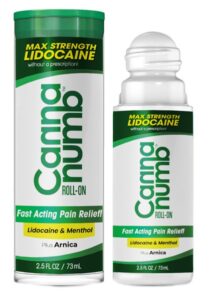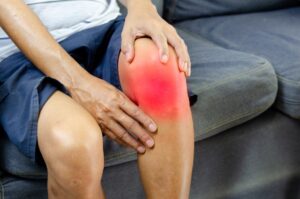Managing Arthritis Pain with Topical Products

For the 59 million people in the U.S. diagnosed with arthritis, the condition can be devastating.
It can impact even the most mundane of daily activities, limiting movement and causing pain that cannot be ignored. It often interferes with job duties, makes exercise impossible, and sleep difficult.
Arthritis applies to more than 100 different conditions impacting joints to various degrees. Osteoarthritis breaks down joint cartilage, and in rheumatoid arthritis, the synovial membranes of joints are attacked by the body’s immune system.
Arthritis is seen in all ages and races. It is more common in women than men. In the United States, it’s the most common cause of disability.
Pain relief for arthritis is often challenging but using topical creams or gels has shown widespread effectiveness. Such topical products target some of arthritis’ most common symptoms, including swelling, pain, tenderness, and stiffness.
For one in four adults in the U.S. with some form of arthritis, such topical products are the quickest path to any relief, and roll on pain relief products are extremely popular.
How Topical Arthritis Treatments Work
Topical treatments for arthritis are medications that the skin absorbs. Typically, they come in the form of gels, or creams that are rubbed into various areas, usually different joints near the surface of the skin, that are experiencing pain.
Topical products also come in patch, roll on and spray forms and many are available over the counter.
These typically contain ingredients such as capsaicin (found in products like Zostrix and Capzasin), which calms nerve cells, salicylates for pain relief (in Bengay or Aspercreme, but also found in general pain relievers such as aspirin), and counterirritants (Biofreeze, Icy Hot) that either provide cold or hot sensations that quickly eases arthritis pain.
Some products are considered anesthetics (Topicaine, LidoPatch) since they use ingredients like lidocaine that numb pain sensations temporarily.
A slew of newer products contains varying degrees of cannabis sativa hemp seed oil or cannabidiol (CBD), which is commonly used for relaxation and pain relief and does not produce the high associated with marijuana use since it does not contain THC.
Some of these products combine hemp seed oil with lidocaine, menthol, and other ingredients.

Effectiveness of Topical Treatments
Studies looking at the effectiveness of topical arthritis treatments are ongoing, but OTC pain medications are generally viewed as having at least a few benefits in easing arthritis pain.
Some studies have found that different topical ingredients, such as capsaicin, may be most effective when used with other treatments like nonsteroidal anti-inflammatory drugs. Some prescribed NSAIDS, such as diclofenac, are found as ingredients in topical products that treat osteoarthritis.
Older individuals with arthritis often prefer cream and gel treatments over oral medications that may harm those with existing heart or stomach conditions.
Still, some side effects occur with topical treatments. Anti-inflammatory creams may cause irritation, burning, and redness to specific joint areas. Different products come with different risks for side effects, while others come with lowered risk of side effects related to other conditions.
The Bottom Line
Topical treatments for arthritis come with anti-inflammatory benefits that help to control pain and swelling. Products come in a variety of strengths, and some are better for different pain locations or forms of arthritis than others.
The best course of action is usually consulting with a doctor before using a topical product to manage arthritis pain.

